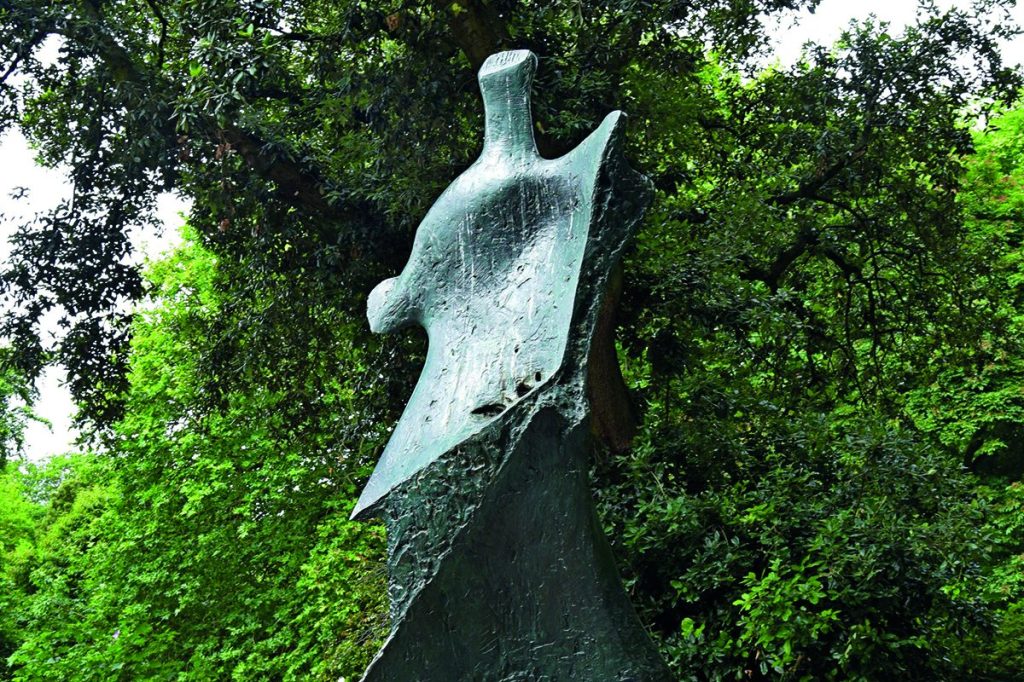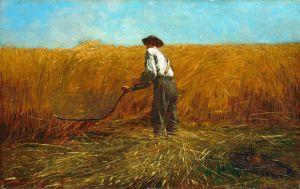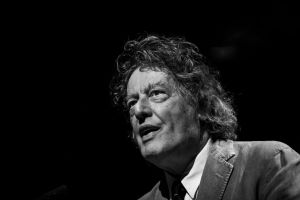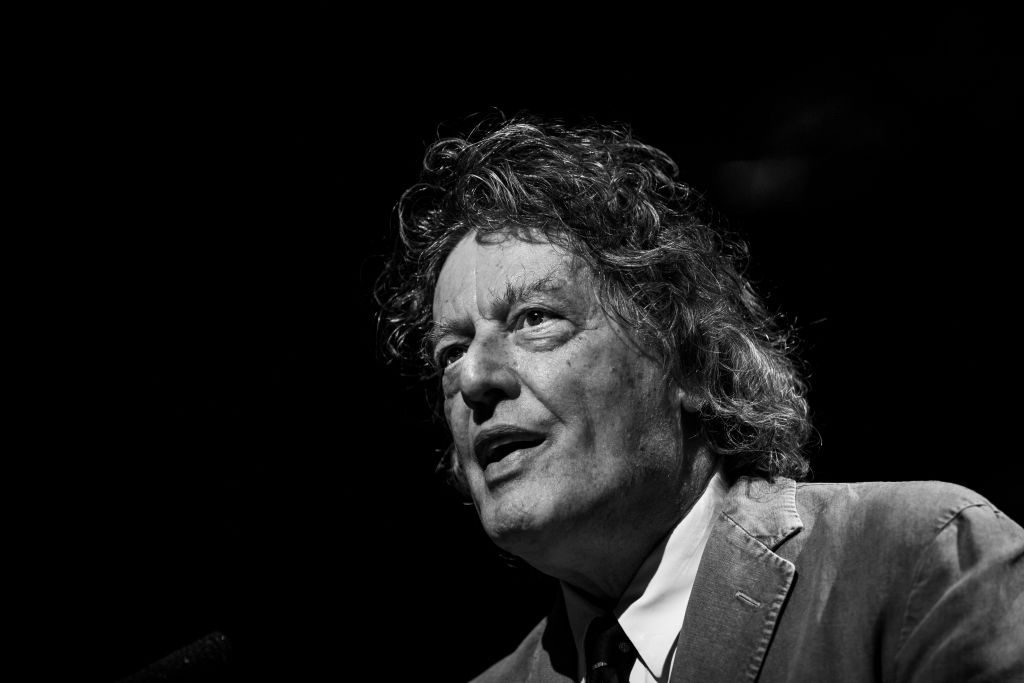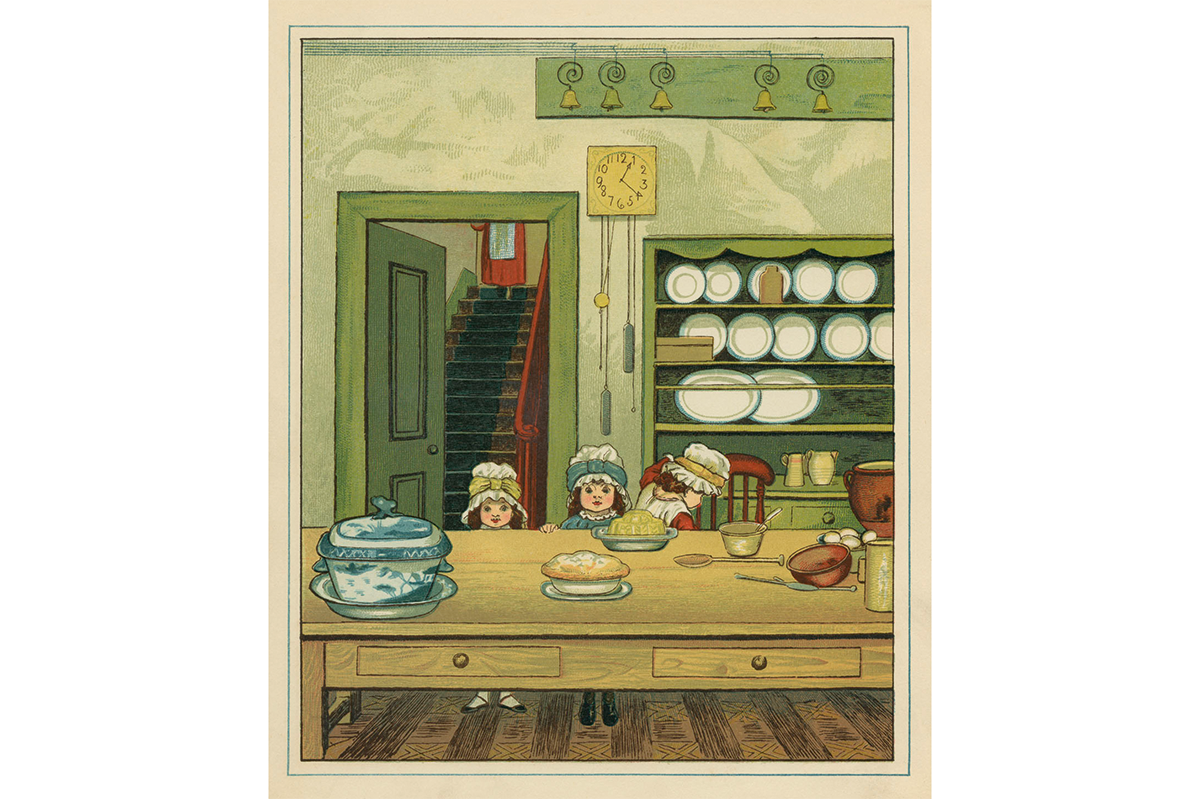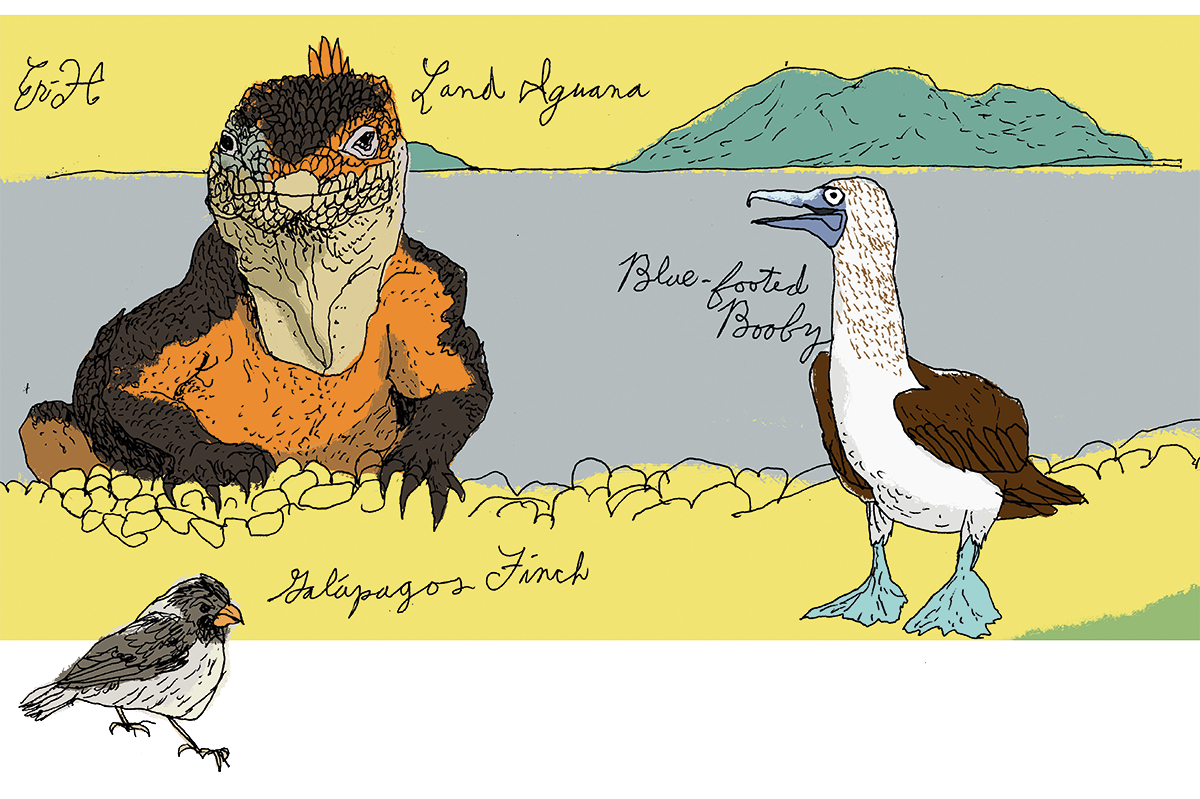From the lilting normcore of Sally Rooney’s Normal People to the frenetic genius of poetic, post-(post?) punk band Fontaines D.C., I’m drawn to talented Irish voices of late. Martin McDonagh’s Oscar-nominated tragicomedy, The Banshees of Inisherin, won three Golden Globes, and my heart, to boot.
And quite rightly. It’s news to no one that the Irish have always been exceptional storytellers; some stereotypes stick because they are true. Plenty of the finest words ever written hail from the town of the hurdled ford, Baile Átha Cliath, Dublin. This fact was recognized by UNESCO in 2010, when they named it a City of Literature. I wish I could say I had had the same reverence for the written word that year; my head should have been lost in the historic works of Oscar Wilde, Seamus Heaney, et al. during university, but alas, it was largely under the duvet.
But then, in 2018, I found myself at the Rabbit Hole, Glastonbury Festival, where Fontaines D.C. frontman Grian Chatten floored the crowd with searingly honest lyricism. I was spellbound, the logophile in me revived. Hypnotic verses about a home he loves yet struggles to reckon with rang around my head. I felt like the opening track of their album, Dogrel, cracked open my skull — in a good way. “Dublin in the rain is mine, a pregnant city with a Catholic mind.”
It’s true that the city’s tumultuous history practically seeps from the fogbound buildings. Not that I’d much noticed on my last visit aged twenty-three, as I no doubt veered in the direction of Temple Bar rather than the Martello Tower. I decided to go back and make a different kind of pilgrimage. I wanted to know my Flann O’Brien from my Brendan Behan. I needed to understand the politics behind every nuanced lyric and album title — the name of the Fontaines’ second album, A Hero’s Death, for example, refers to Behan’s 1958 play An Giall (The Hostage). I booked a flight touching down in time for Culture Night.
Held every year, it’s a smorgasbord of plays, gigs, exhibitions, readings and open studios. Local friends joked that the most culture we’d likely observe would be myriad attempts at “splitting the G” on pints of the black stuff (if you know, you know). Like I said, some stereotypes stick because they are true, but Ireland and its inhabitants are anything but one-dimensional.
My favorite trips take in a good mix of high and low culture, though the order in which you indulge is crucial. Getting to grips with The Picture of Dorian Gray is intense on a whiskey hangover. I broke away from my comrades in sticky-floored dive bars to get out and walk in Sterne, Joyce and Chatten’s footsteps. I wanted to step into the same Sweny’s chemist where Leopold Bloom picked up a bar of “sweet lemony” soap. I wanted to poke my head in at the Clarence Hotel, where U2 played gigs on the rooftop overlooking the Liffey, acting like they owned the place (they did).
Day one. Sinking pints on arrival is essential. I established the recurring characters of this story, dropping in on old friends and gathering some general intel from friendly strangers. I wasn’t to leave without seeing the deer-inhabited Phoenix Park, or braving a dip like Buck Mulligan at the Forty-Foot in Sandycove. Perhaps when it stops raining, I mused, knowing it would likely never stop.
One friend offered to join me on my stroll through St. Stephen’s Green. I admired the Henry Moore sculpture, part of the Yeats memorial garden. I smugly noted that the neighboring James Joyce bust faces his former university at Newman House. My plus-one pretended to be interested, scrolling Instagram for lunch ideas.
No. 86 St. Stephen’s Green became a necessary point to stop next, this being Dublin, and us now being soaked through. There an imposing Georgian townhouse is home to the MoLi (Museum of Literature Ireland), which the National Library of Ireland and University College Dublin teamed up to launch. Filled with interactive and immersive exhibitions, plus countless literary treasures, it offered the perfect place to warm up. I’d been optimistic about the weather, having flown in from sun-drenched Lisbon, imagining a crisp autumnal trip. I ended up buying my comrade a raincoat in a vain attempt to apologize for dragging her around parks and backstreets in driving rain, looking for spots of cultural interest. “It’s research,” I repeated, as she grew more and more miserable.
I tried not to spend too long at the James Joyce exhibition put together to mark the centenary of Ulysses. MoLi’s program changes all the time, so you might try an audiovisual experience of Samuel Beckett’s The Unnamable or get to know the Blasket storytelling tradition. “Cool,” said my friend.
I’d imagine the museum’s Commons Café gardens are beautiful in the sunshine, birds chirping. It was still, however, raining, so we took aim at Gutter Bookshop, stuffed with the best of Irish literature, via St. Patrick’s Cathedral, to spy the place where its Dean Jonathan Swift wrote Gulliver’s Travels. “Mmm. Lovely,” said my pal, mascara dripping down her cheek.
This was to be a saga of compromises, I realized. And so to the Shelbourne for a few scoops, which happen to feature in many works of Irish literature. William Makepeace Thackeray, George Moore, Oscar Wilde and Joyce himself have propped up the infamous bar, encased with wooden shutters for extra privacy. No prizes for guessing where Elizabeth Bowen based her classic narrative The Shelbourne. We both loved the pomp and primness. I treated us to glasses of Champagne from the Sparklers menu (only fair).
Day two. I, the protagonist of this tale, faced some conflict. I rose early, peeling myself from the comfort of my bed at the Dylan Hotel. It’s Dublin’s only five-star boutique hotel, the sort of place you want to linger over an omelet and the morning paper. I’d planned a quick piece of toast and a trek to find the Book of Kells. The illuminated manuscript is one of the most famous artifacts in the world, after all. My comrade was dreaming of coffee shops and expensive thrift stores. Capel Street and Drury Street’s colorful shopfronts beckoned.
Our entente took the form of me leaving her to a leisurely morning, while I peered at a dusty old book. A literary walking tour would have been next on my agenda (there are dozens to choose from, of varying intensity and booziness), but I ended up customizing my own, with plenty of snacks.
I moved on to the National Library of Ireland, with the most comprehensive collection of Irish documentary material in the world. A five-minute walk from Trinity College, where the Book of Kells is displayed, it sits near the contemporary Douglas Hyde Gallery, and dangerously close to the Irish Whiskey Museum. Happily, I squeezed in a brief tour of the Oscar Wilde House, nearby at Merrion Square, sparing my friend the trouble of pretending to be excited. We met up for a fancy lunch at Pearl Brasserie, worth booking ahead to celebrate something special (we toasted my friend’s three-hour nap while I’d been out getting soaked, again). French classics are served up in a beautiful subterranean setting complete with fish tanks, and staff are a joy.
Dessert was a cookie and a mug of the house blend at specialty coffee roaster Kaph, before we pulled on our raincoats. Again. If you walk there from Trinity College Library, you pass the Molly Malone statue, bravely offering cockles and mussels no matter the weather. We crossed the Liffey to have a peep inside The Winding Stair, a cozy book- store specializing in hard-to-procure titles and an abundance of children’s stories. Upstairs, there’s a little-known restaurant offering Irish craft beers, wine and even a full Irish breakfast. Heaven, basically.
A wander around fast-developing hipster haven Stoneybatter proved it to be Dublin’s coolest spot. Phoenix Park and the Irish Museum of Modern Art aren’t far, but Tsing-Tao beers and noodles at trendy Chinese Hakkahan won out. Local friends joined us for copious drinks in the quintessential Walsh’s pub, across the road. Saying yes to Baby Guinness shots in lieu of more intellectual pursuits, I was back in their good books. Safe to say, the next morning, they were no longer in mine.
Day three. A hangover so heavy only alcohol could fix it. We checked in at the Grafton Hotel, minutes away from buzzy Grafton Street and its world-famous drinking dens.
Our suite featured a balcony overlooking the bustling streets, though the weather meant it went unused. This is a great place to stay during Dublin’s International Literature Festival, held each May. You’d be well placed for the International Dublin Writers’ Festival too, right in the thick of it. The Grafton’s beds are quite possibly the city’s softest, utterly perfect for curling up with your latest read, rain beating at the window. Some peace and quiet can be found at the Old Library nearby if you do fancy a change of scene.
Much more distracting was the hotel’s in-house cocktail bar, Bartley’s. A punchy menu offers dozens of options. We tried “Through the Looking Glass,” a mix of Jimador Blanco tequila, in-house special chili-infused mango syrup, triple sec and lime juice.
Here for more literature, fewer libations? The Chester Beatty Library is super close, with its incredible collection of rare manuscripts. You might escape to Roman Egypt via some of the first fragments of papyrus, or get to know the inner workings of East Asian, Islamic and Western manuscript and printing traditions. But do escape to “higgledy-piggledy” Grogans — a typical Irish pub with a literary bent — afterwards for a swift half. The walls are dotted with works by local artists and the Guinness is perfect.
A ten-minute walk will take you to the Abbey Theater, co-founded by W.B. Yeats and Isabella Augusta, Lady Gregory in 1904. Ireland’s most famed actors have trod these very boards, in plays from Yeats to Seán O’Casey to John Millington Synge. Catch a show or book yourself a backstage tour, soaking up the epochal history of the place.
After Grogans, there was no going back. Every Dublin trip should end with drinks, live music and cheeky cigarettes with friends new and old, spilling out onto the pavement. Hit Hogan’s, Whelan’s and Pygmalion, in that order. Oh, and if Fontaines D.C are in town, do everything in your power to get a ticket. Dublin in the rain might be Grian Chatten’s, and many of the literary greats mentioned here. But you’ll come away feeling like it’s yours, too.
This article was originally published in The Spectator’s March 2023 World edition.



